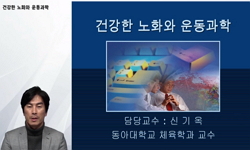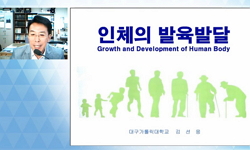Physical activity has positive effects on cognitive functions by aging. However, it is rare to find research that have scientifically investigated the effects on the affective-cognitive function. Thus, this study aims to brainscientifically research i...
http://chineseinput.net/에서 pinyin(병음)방식으로 중국어를 변환할 수 있습니다.
변환된 중국어를 복사하여 사용하시면 됩니다.
- 中文 을 입력하시려면 zhongwen을 입력하시고 space를누르시면됩니다.
- 北京 을 입력하시려면 beijing을 입력하시고 space를 누르시면 됩니다.

청년기 · 노년기 성인의 신체활동 참여가 정서인지에 미치는 영향 = The Influence of Participation of Physical Activity in Adolescence and Senescence Adults on Affective Cognition
한글로보기https://www.riss.kr/link?id=A104986975
- 저자
- 발행기관
- 학술지명
- 권호사항
-
발행연도
2017
-
작성언어
Korean
- 주제어
-
등재정보
KCI등재
-
자료형태
학술저널
-
수록면
41-54(14쪽)
-
KCI 피인용횟수
0
- DOI식별코드
- 제공처
-
0
상세조회 -
0
다운로드
부가정보
다국어 초록 (Multilingual Abstract)
Physical activity has positive effects on cognitive functions by aging. However, it is rare to find research that have scientifically investigated the effects on the affective-cognitive function. Thus, this study aims to brainscientifically research its effects of physical activity on the affective-cognitive function of adults in adolescence and senescence. As subjects of this study, a total of 60 males adults in D region were selected, and then equally divided into four groups of young exercise group(25~35y/o), young non-exercise group(26~35y/o), old exercise group(60~70y/o), and old non-exercise group(60~70y/o). As experiment tools, the EEG measuring equipment and International Affective Picture System(IAPS) were used. The experiment of this study used an affective-cognitive task where subjects pressed a button depending on emotional valence(positive, neutral, negative) shown in thepictures. During the task, EEG measured eight areas(Fp1, Fp2, Fz, C3, C4, Cz, T3, T4) out of brain areas in accordance with the international 10-20 electrode system, EEG was measured. For statistical analysis, a three-way ANOVA on 4(group)×3(stimulus)×8(area) was conducted. The results showed main effects of group in both reaction time and accuracy, and also in the latency of P3. And there was an interaction between group and stimulus the amplitude of P3. In conclusion, Physical activity has positive effects on the affective-cognitive function of people in adolescence and senescence.
국문 초록 (Abstract)
결론: 신체활동은 청년층과 노년층의 정서적 인지기능에 긍정적인 영향을 미치는 것으로 나타났다.
신체활동은 노화로 의한 인지기능 저하에 긍정적 영향을 미친다. 하지만 신체활동 참여가 정서인지기능에 미치는영향을 과학적으로 밝혀 낸 연구는 드물다. 따라서 본 연구의 목적은 청년...
신체활동은 노화로 의한 인지기능 저하에 긍정적 영향을 미친다. 하지만 신체활동 참여가 정서인지기능에 미치는영향을 과학적으로 밝혀 낸 연구는 드물다. 따라서 본 연구의 목적은 청년기와 노년기 성인의 정서인지 기능에 신체활동참여가 어떠한 영향을 미치는지를 뇌 과학적으로 연구하는 것이다. 연구의 피험자는 D 광역시 성인 남성 60명으로선정하였으며, 청년 운동 집단(25∼35살), 청년 비 운동 집단(26∼35살), 노년 운동 집단(60∼70살), 노년 비 운동집단(60∼70살) 4개의 집단으로 구성하였다. 실험도구는 EEG 측정 장비와 국제정서사진체계(International AffectivePicture System: IAPS)를 사용하였다. 본 연구의 실험과제는 사진으로 제시하는 세 가지 정서자극(긍정적, 중립, 부정적)에 적합한 버튼을 눌러 정서적인지 검사를 실시하였다. EEG 측정은 8개(Fp1, Fp2, Fz, C3, C4, Cz, T3, T4)의 영역을측정하였다. 통계처리는 4(집단)×3(자극)×8(영역)에 대한 삼원분산분석을 실시하였다. 결과: 본 연구 결과, 반응시간과반응정확률 그리고 P3 잠재기는 집단간 주효과가 나타났다. 그리고 P3 진폭은 집단과 자극간 상호작용이 나타났다.
결론: 신체활동은 청년층과 노년층의 정서적 인지기능에 긍정적인 영향을 미치는 것으로 나타났다.
참고문헌 (Reference)
1 김성운, "청각자극 난이도에 따른 선택적 주의의 정보처리현상" 한국스포츠심리학회 19 (19): 17-28, 2008
2 서쌍희, "정서조절에 관한 Event related potentials 및 행동학적 반응 연구" 한국산학기술학회 14 (14): 5003-5011, 2013
3 김성운, "장기간의 유산소운동이 노인의 인지기능에 미치는 영향 - P300 활용연구 -" 한국체육과학회 22 (22): 413-428, 2013
4 신미경, "운동 프로그램이 노인의 전두엽 인지기능에 미치는 효과" 한국간호과학회 39 (39): 107-115, 2009
5 Jasper, H. H., "The ten twenty electrode system of the international federation" 10 : 371-375, 1958
6 Predovan, D., "The effect of three months of aerobic training on stroop performance in older adults" 2012
7 Rovio, S., "The effect of midlife physical activity on structural brain changes in the elderly" 31 (31): 1927-1936, 2010
8 LEE T. FERRIS, "The Effect of Acute Exercise on Serum Brain-Derived Neurotrophic Factor Levels and Cognitive Function" Ovid Technologies (Wolters Kluwer Health) 39 (39): 728-734, 2007
9 Park, J. H., "Standardization of Korean Version of the Mini-Mental State Examination (MMSE-K) for Use in the Elderly. Part Ⅱ. Diagnostic Validity" 28 (28): 125-135, 1989
10 Eric E. Hall, "Regional brain activity and strenuous exercise: Predicting affective responses using EEG asymmetry" Elsevier BV 75 (75): 194-200, 2007
1 김성운, "청각자극 난이도에 따른 선택적 주의의 정보처리현상" 한국스포츠심리학회 19 (19): 17-28, 2008
2 서쌍희, "정서조절에 관한 Event related potentials 및 행동학적 반응 연구" 한국산학기술학회 14 (14): 5003-5011, 2013
3 김성운, "장기간의 유산소운동이 노인의 인지기능에 미치는 영향 - P300 활용연구 -" 한국체육과학회 22 (22): 413-428, 2013
4 신미경, "운동 프로그램이 노인의 전두엽 인지기능에 미치는 효과" 한국간호과학회 39 (39): 107-115, 2009
5 Jasper, H. H., "The ten twenty electrode system of the international federation" 10 : 371-375, 1958
6 Predovan, D., "The effect of three months of aerobic training on stroop performance in older adults" 2012
7 Rovio, S., "The effect of midlife physical activity on structural brain changes in the elderly" 31 (31): 1927-1936, 2010
8 LEE T. FERRIS, "The Effect of Acute Exercise on Serum Brain-Derived Neurotrophic Factor Levels and Cognitive Function" Ovid Technologies (Wolters Kluwer Health) 39 (39): 728-734, 2007
9 Park, J. H., "Standardization of Korean Version of the Mini-Mental State Examination (MMSE-K) for Use in the Elderly. Part Ⅱ. Diagnostic Validity" 28 (28): 125-135, 1989
10 Eric E. Hall, "Regional brain activity and strenuous exercise: Predicting affective responses using EEG asymmetry" Elsevier BV 75 (75): 194-200, 2007
11 Frode Stenseng, "Positive Emotions in Recreational Sport Activities: The Role of Passion and Belongingness" Springer Nature 16 (16): 1117-1129, 2015
12 Yu-Kai Chang, "Physical activity and working memory in healthy older adults: An ERP study" Wiley-Blackwell 50 (50): 1174-1182, 2013
13 Ray Johnson, "P300 and Long-Term Memory: Latency Predicts Recognition Performance" Wiley-Blackwell 22 (22): 497-507, 1985
14 Magnié, M. N., "P3, N400, aerobic fitness, and maximal aerobic exercise" 37 (37): 369-377, 2000
15 Dongrui Wu, "Optimal Arousal Identification and Classification for Affective Computing Using Physiological Signals: Virtual Reality Stroop Task" Institute of Electrical and Electronics Engineers (IEEE) 1 (1): 109-118, 2010
16 Marc D. Lewis, "Neurophysiological Correlates of Emotion Regulation in Children and Adolescents" MIT Press - Journals 18 (18): 430-443, 2006
17 Denise C. Park, "Models of visuospatial and verbal memory across the adult life span" American Psychological Association (APA) 17 (17): 299-320, 2002
18 Madhav Thambisetty, "Longitudinal changes in cortical thickness associated with normal aging" Elsevier BV 52 (52): 1215-1223, 2010
19 Patrick D. Gajewski, "Long-term habitual physical activity is associated with lower distractibility in a Stroop interference task in aging: Behavioral and ERP evidence" Elsevier BV 98 : 87-101, 2015
20 Patrick D. Gajewski, "Lifelong physical activity and executive functions in older age assessed by memory based task switching" Elsevier BV 73 : 195-207, 2015
21 Smith, D. P., "Influences of age on emotional reactivity during picture processing" 60 (60): 49-56, 2005
22 박태진, "IAPS 자극에 대한 한국 대학생의 정서 평가" 한국인지과학회 20 (20): 183-195, 2009
23 Frank-Gerald Pajonk, "Hippocampal Plasticity in Response to Exercise in Schizophrenia" American Medical Association (AMA) 67 (67): 133-143, 2010
24 Ray Johnson, "For Distinguished Early Career Contribution to Psychophysiology: Award Address, 1985" Wiley-Blackwell 23 (23): 367-384, 1986
25 Andrew J Calder, "Facial expression recognition across the adult life span" Elsevier BV 41 (41): 195-202, 2003
26 Forte, R., "Enhancing cognitive functioning in the elderly: multicomponent vs resistance training" Dove Medical Press Ltd. 8 : 19-, 2013
27 Fabiani, M., "Enhancing Cognitive and Brain Plasticity of Older Adults" Human Kinetics 2009
28 Matthias Kliegel, "Emotional after‐effects on the P3 component of the event‐related brain potential" Wiley-Blackwell 38 (38): 129-137, 2003
29 Tracy A. Dennis, "Emotional Face Processing and Emotion Regulation in Children: An ERP Study" Informa UK Limited 34 (34): 85-102, 2009
30 Mangun, G. R., "Electrophysiology of mind: Event-related brain potentials and cognition" Oxford University Press 40-85, 1995
31 Oak, J. S., "Effects of exercise on physical fitness in aging" 8 (8): 9-30, 1999
32 Nancy A. Dennis, "Effects of aging on the neural correlates of successful item and source memory encoding." American Psychological Association (APA) 34 (34): 791-808, 2008
33 SUSAN SULLIVAN, "EMOTION RECOGNITION DEFICITS IN THE ELDERLY" Informa UK Limited 114 (114): 403-432, 2009
34 Bargh, J. A., "Conditional automaticity: Varieties of automatic influence in social perception and cognition" 1989
35 Marie T. Banich, "Cognitive control mechanisms, emotion and memory: A neural perspective with implications for psychopathology" Elsevier BV 33 (33): 613-630, 2009
36 Claudia Voelcker-Rehage, "Cardiovascular and Coordination Training Differentially Improve Cognitive Performance and Neural Processing in Older Adults" Frontiers Media SA 5 : 2011
37 Guiney, H., "Benefits of regular aerobic exercise for executive functioning in healthy populations" 20 (20): 73-86, 2013
38 Banaschewski, T., "Annotation: what electrical brain activity tells us about brain function that other techniques cannot tell us–a child psychiatric perspective" 48 (48): 415-435, 2007
39 Aire Mill, "Age-related differences in emotion recognition ability: A cross-sectional study." American Psychological Association (APA) 9 (9): 619-630, 2009
40 Katherine A. Cappell, "Age differences in prefontal recruitment during verbal working memory maintenance depend on memory load" Elsevier BV 46 (46): 462-473, 2010
41 Jason R. Themanson, "Age and physical activity influences on action monitoring during task switching" Elsevier BV 27 (27): 1335-1345, 2006
42 Jeffrey T. West, "Age Effects on Emotion Recognition in Facial Displays: From 20 to 89 Years of Age" Informa UK Limited 38 (38): 146-168, 2012
동일학술지(권/호) 다른 논문
-
알코올 중독자의 얼굴 표정 인식과 관련된 뇌 활성화 특성
- 한국감성과학회
- 박미숙
- 2017
- KCI등재
-
- 한국감성과학회
- 김광수
- 2017
- KCI등재
-
한국 드라마 수용에 있어서 국가별 감정 반응 분석: 드라마 <도깨비>를 중심으로
- 한국감성과학회
- 이예원
- 2017
- KCI등재
-
면 데님소재의 색채 특성과 주관적 감각이 선호도에 미치는 영향
- 한국감성과학회
- 김여원
- 2017
- KCI등재
분석정보
인용정보 인용지수 설명보기
학술지 이력
| 연월일 | 이력구분 | 이력상세 | 등재구분 |
|---|---|---|---|
| 2027 | 평가예정 | 재인증평가 신청대상 (재인증) | |
| 2021-01-01 | 평가 | 등재학술지 유지 (재인증) |  |
| 2018-01-01 | 평가 | 등재학술지 유지 (등재유지) |  |
| 2016-03-08 | 학술지명변경 | 외국어명 : Koean Journal of The Science of Emotion & Sensibility -> Science of Emotion & Sensibility |  |
| 2015-01-01 | 평가 | 등재학술지 유지 (등재유지) |  |
| 2011-01-01 | 평가 | 등재학술지 유지 (등재유지) |  |
| 2009-01-01 | 평가 | 등재학술지 유지 (등재유지) |  |
| 2006-01-01 | 평가 | 등재학술지 선정 (등재후보2차) |  |
| 2005-01-01 | 평가 | 등재후보 1차 PASS (등재후보1차) |  |
| 2003-07-01 | 평가 | 등재후보학술지 선정 (신규평가) |  |
학술지 인용정보
| 기준연도 | WOS-KCI 통합IF(2년) | KCIF(2년) | KCIF(3년) |
|---|---|---|---|
| 2016 | 0.59 | 0.59 | 0.49 |
| KCIF(4년) | KCIF(5년) | 중심성지수(3년) | 즉시성지수 |
| 0.55 | 0.52 | 0.779 | 0.11 |




 ScienceON
ScienceON 코리아스칼라
코리아스칼라






